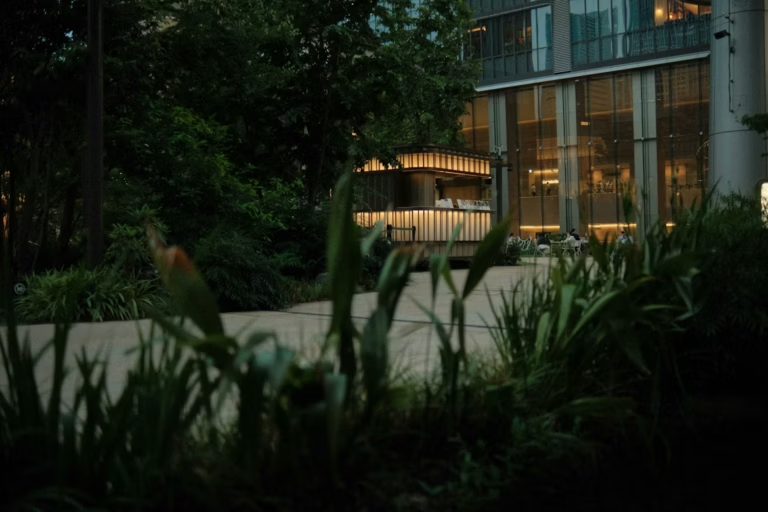Councils across Perth and Western Australia face growing pressure to design and maintain public spaces that are not only safe, but also functional, inclusive, and community-friendly. That’s where Crime Prevention Through Environmental Design (CPTED) becomes an essential tool.
At Smartsec Security Solutions, we specialise in delivering CPTED assessments tailored specifically to the needs of Perth councils. We go beyond ticking boxes—we develop reports that consider the full context of your environment, your safety goals, your planning frameworks, and your long-term community outcomes.
Why CPTED Matters for Perth Councils
Public safety is a core responsibility of local government. From parks and laneways to town centres, carparks, skate parks and community hubs—ensuring these spaces are safe, accessible, and welcoming is key to encouraging use and reducing crime.
CPTED gives councils a structured way to identify risks and implement design-based solutions that deter antisocial behaviour and improve amenity. But to truly support decision-making, a CPTED report must do more than cover the basics—it needs to provide:
- Context-aware recommendations
- Realistic cost considerations
- Justification for future capital works
- A pathway for short-term wins and long-term improvements
That’s exactly what we provide.
How We Help Perth Councils with CPTED Assessments
We support councils at every stage—from early-stage planning to post-incident reviews—by delivering CPTED reports that are:
- Detailed and practical
- Tailored to the unique characteristics of each site
- Framed to support funding applications and internal planning
- Backed by real-world experience in local government and crime prevention
We work directly with community safety teams, planners, asset managers and place activation teams to ensure our recommendations are relevant, actionable, and aligned with council goals.
Going Beyond the Minimum CPTED Requirements
While many CPTED reports follow a basic framework, we go deeper. Our approach considers not only the physical layout of a site but also its social use, historical incident patterns, stakeholder concerns, and planned future development.
Key ways we extend beyond standard assessments include:
- Contextual analysis: We factor in community demographics, usage patterns, nearby services, and regional crime trends.
- Integrated strategy: Our recommendations often link CPTED with place activation, community engagement, and long-term asset planning.
- Outcome-driven reporting: We structure each report to support grant funding, capital improvement justification, and interdepartmental planning.
- Photographic walk-throughs: Every report is supported by photo evidence and location references to clearly show risks and opportunities.
- Vegetation and lighting audits: We measure lux levels, assess natural surveillance, and evaluate how landscaping contributes to concealment or activation.
- Staged action plans: Instead of overwhelming teams with a long list of issues, we categorise recommendations into:
- Immediate safety actions (“quick wins”)
- Medium-term design improvements
- Long-term strategic interventions linked to planning or capital works
This structured approach ensures your internal teams and leadership can move forward confidently with CPTED as a driver—not a compliance hurdle.
What Our CPTED Reports Typically Include
Each CPTED report for Perth councils includes:
- Executive summary with priority recommendations
- Site background and risk context
- Photographic documentation of key risk areas
- Lighting and visibility audit
- Natural surveillance, access control, territoriality, and maintenance analysis
- Landscape and vegetation commentary
- Consideration of CPTED support for events, programming, and activation
- Clear, prioritised recommendations for short- and long-term implementation
- References to ISO 31000, WA planning frameworks, and relevant Australian Standards
We also offer follow-up briefings, presentations to stakeholders, and support for integrating findings into broader planning documents.
Helping You Secure Capital and Plan Strategically
We understand that CPTED isn’t just about fixing today’s problems—it’s about justifying tomorrow’s investment. Councils use our reports to:
- Support funding or grant applications
- Build the case for infrastructure upgrades
- Demonstrate due diligence in risk and safety management
- Coordinate between safety, planning, and community engagement teams
- Future-proof spaces against emerging social or environmental challenges
By aligning our assessments with your broader operational goals, we help CPTED become a strategic asset—not just a standalone report.
Who We Work With
We’ve supported a range of WA local governments and agencies with CPTED and physical security consulting, including:
- Community safety and rangers teams
- Parks and infrastructure managers
- Urban planners and asset coordinators
- Place-making and activation officers
- Development teams preparing capital works submissions
Whether it’s a new design, a problematic site, or a recurring hotspot, we tailor our CPTED work to your budget, timeframe, and stakeholder priorities.
Why Councils Choose Smartsec Security Solutions
- We’re independent: We don’t sell products or installation services
- We’re local: Based in WA, we understand Perth’s council environments, priorities, and regulatory frameworks
- We’re experienced: Over 17 years in security consulting, risk management, and local government collaboration
- We’re flexible: Reports can be adapted to suit internal briefings, public engagement, or grant submissions
- We care about outcomes: Every recommendation we make is designed to reduce risk and support better use of public space
Get a CPTED Assessment That Supports Your Goals
If you’re a Perth council looking for more than just a box-ticking CPTED report, we’re here to help. Our assessments are practical, strategic, and designed to help your team make decisions that improve safety and community outcomes—now and in the future.
To learn more or request a CPTED assessment, visit our Security Consulting Services page.



